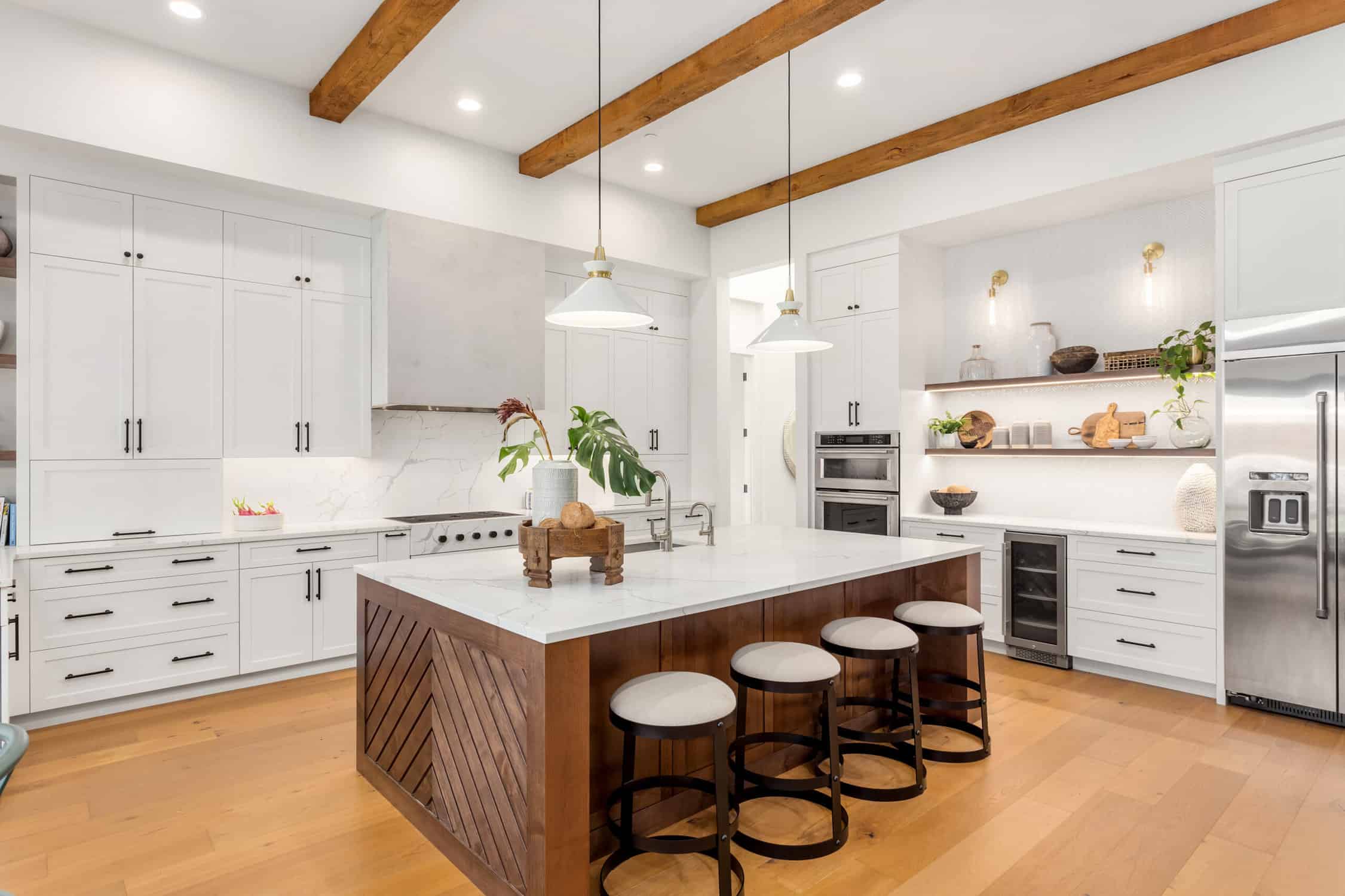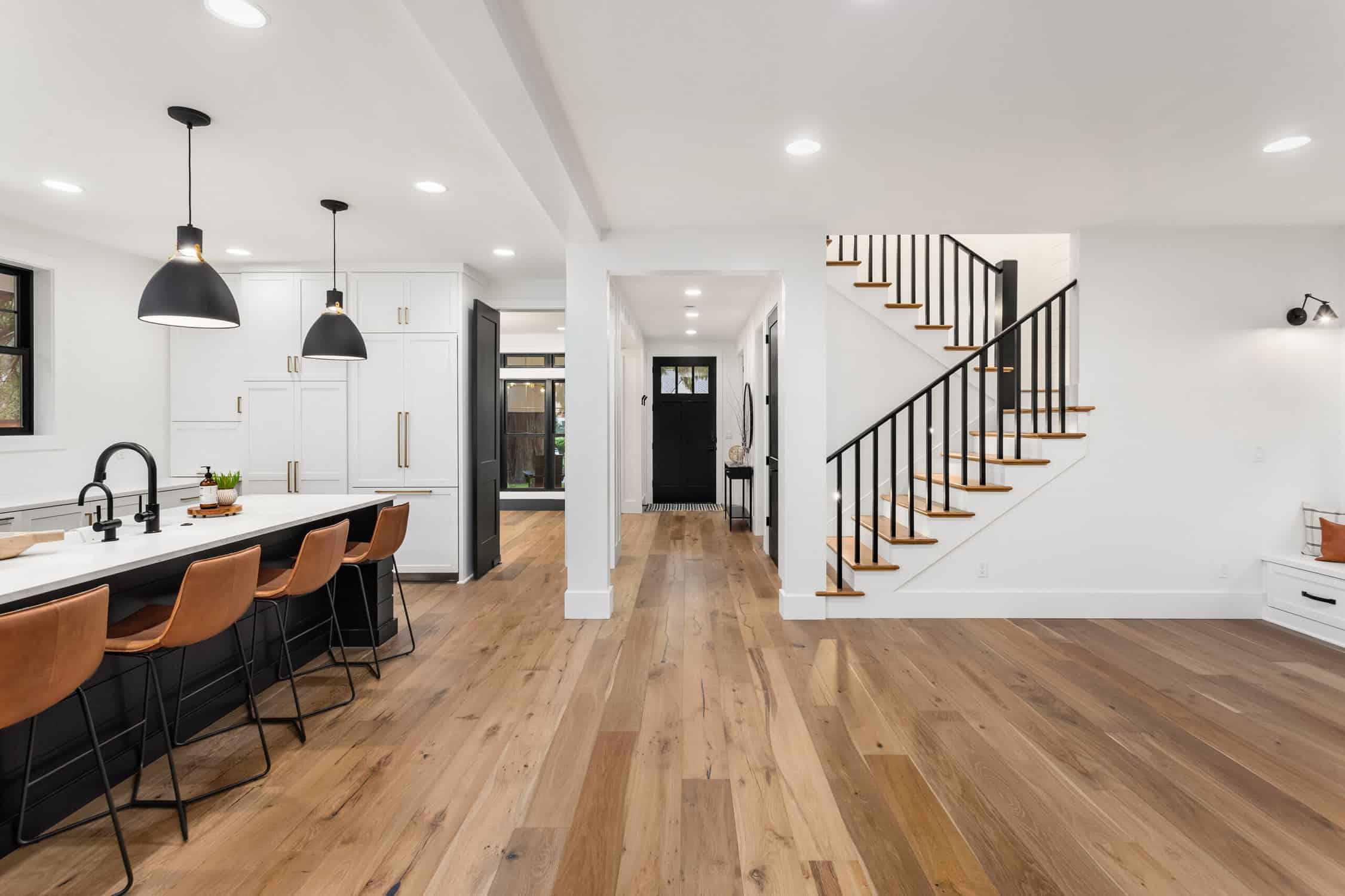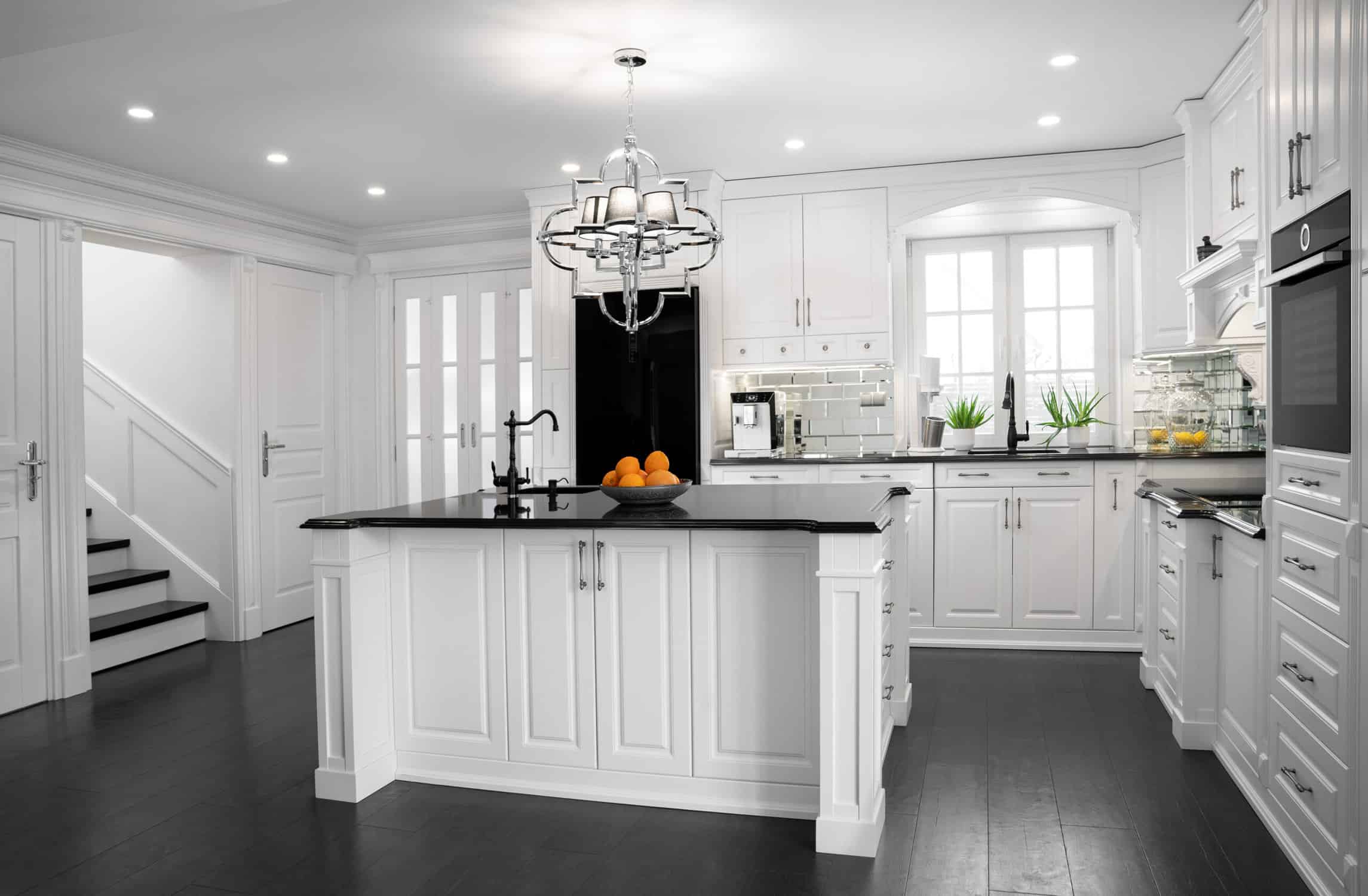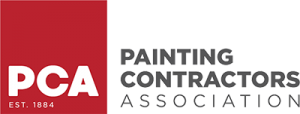Paint adhesion is not magic. It’s physics, chemistry, and preparation. Whether you’re coating drywall, wood, concrete, or metal, your paint’s ability to stay put depends on two core factors:
-
Surface texture — the microscopic “grip” that allows mechanical bonding.
-
Surface cleanliness — ensuring nothing interferes with chemical bonding.
Even the most expensive premium paint will fail prematurely if applied to a glossy, smooth, or contaminated surface.
Rough textures create tiny anchor points, giving paint more surface area to latch onto. Clean surfaces allow the paint’s resins to form direct bonds with the substrate or primer. Skip either, and the finish can peel, blister, or flake in months instead of years.
Understanding Paint Adhesion – The Basics
Mechanical vs. Chemical Bonding
Paint doesn’t just “sit” on a wall. It grabs. It can grab in two main ways:
-
Mechanical bonding: The paint clings to the microscopic peaks and valleys on a surface. Think of Velcro — without hooks and loops, there’s no grip.
-
Chemical bonding: The paint’s resins react with or physically attach to the substrate’s molecules (or to the primer layer), creating a continuous film.
Example: Sanded drywall holds paint better than glossy enamel because the sanding creates a micro-profile the paint can lock into.
The Paint Adhesion Process Step-by-Step
-
Contact – Wet paint reaches into surface irregularities.
-
Wetting & Penetration – Paint flows into pores or scratches, increasing contact area.
-
Curing – Solvents or water evaporate, resins harden, and the film bonds permanently.
How Surface Texture Affects Paint Grip
Ideal Texture Profiles for Different Substrates
| Surface Type | Ideal Prep Texture | Notes |
|---|---|---|
| Drywall | Light sanding with 120–150 grit, dust-free | Smooth enough for finish, but not glossy |
| Wood | Sand along grain, remove mill glaze | Exterior wood benefits from open pores |
| Concrete/Masonry | Acid etch or abrasive blast to open pores | Avoid steel-troweled slick finishes |
| Metal | Scuff with 80–120 grit or abrasive blast | Removes shine and promotes primer adhesion |
A wall that’s too smooth offers no anchor points. Paint may appear fine initially, but seasonal expansion and contraction will quickly cause peeling. On the other end, surfaces that are too rough can absorb paint unevenly, leading to a blotchy finish and excessive material use.
Measuring Surface Profile
In industrial settings, painters use profilometers to measure surface profile depth (the height of the microscopic peaks and valleys). For heavy-duty coatings, a profile of 1–3 mils is common. Residential painters judge by feel and sheen — a dull, lightly abraded surface is usually right.
Consequences of Incorrect Texture
-
Too smooth → poor paint adhesion, early peeling.
-
Too rough → high absorption, poor leveling, extra coats required.
The Critical Role of Cleanliness in Adhesion Success
Common Surface Contaminants
Paint bonds to the surface it touches — but if the first thing it touches is dust, grease, or mildew, that’s the real “substrate.” Common culprits include:
-
Drywall sanding dust
-
Cooking grease and hand oils
-
Mold, mildew, algae growth
-
Efflorescence (salt deposits) on masonry
Cleaning Methods by Surface Type
| Surface Type | Cleaning Method | Follow-Up |
|---|---|---|
| Interior Walls | Mild detergent wash, rinse with clean water | Allow to dry completely |
| Wood | TSP (trisodium phosphate) or degreaser | Sand lightly after cleaning |
| Metal | Solvent wipe (mineral spirits, acetone) | Abrade surface after wipe |
| Concrete | Power wash + acid etch for stubborn grime | Neutralize acid before painting |
Why “Looks Clean” Isn’t Clean Enough
Many paint adhesion failures occur because surfaces look clean but aren’t. For example, kitchen walls can hold an invisible film of cooking oils. Paint over it, and weeks later, you might see bubbling or peeling in patches where the film blocked paint adhesion.
How Painters Professionally Prepare Surfaces for Adhesion
Step-by-Step Professional Prep Workflow
-
Inspect the surface for damage, contamination, and texture.
-
Remove loose material — peeling paint, rust, or chalky residue.
-
Create texture — sanding, scuffing, blasting, or etching.
-
Clean — using the correct cleaner for the substrate.
-
Dry — moisture is an adhesion killer.
-
Prime — select a primer compatible with both the surface and the topcoat.
Product-Specific Prep Recommendations
-
Sherwin-Williams Extreme Bond Primer – Ideal for glossy, slick, or hard-to-coat surfaces.
-
Benjamin Moore Fresh Start® – Excellent for bare wood and chalky drywall.
-
Zinsser Bulls Eye 1-2-3® – Versatile paint adhesion primer for multiple surfaces, but still requires proper cleaning.
The Science of Texture–Cleanliness Balance
Why Both Are Needed Together
A rough surface still fails if it’s dirty. Dirt and grease act like a release agent. Conversely, a perfectly clean but glass-smooth surface has nothing for the paint to hold onto. Strong adhesion requires both a clean substrate and a proper texture profile.
Industry Testing Methods for Adhesion
-
Cross-hatch tape test – Cuts a grid into the coating, applies tape, and pulls to check adhesion.
-
Pull-off adhesion test – Measures the force needed to detach paint from the substrate.
Common Mistakes That Lead to Adhesion Failure
-
Painting over dust or chalk residue.
-
Skipping primer on porous or slick surfaces.
-
Using household cleaners but not rinsing (leaving soap film).
-
Painting before the surface is fully dry after washing.
Professional Services That Ensure Adhesion Success
Why Hire a Professional Painter for Surface Prep
Pros bring industrial-grade cleaning tools, sanding equipment, and primers. They know the exact texture each coating needs and how to achieve it without damaging the substrate.
Service Examples
-
Commercial epoxy floors – Require shot blasting to create a specific profile.
-
Historic restoration – Needs gentle cleaning to preserve original materials.
Maintenance to Keep Paint Adhering Longer
-
Clean painted surfaces periodically to prevent grime buildup.
-
Touch up chips quickly to avoid moisture penetration.
-
Inspect annually for chalking, peeling, or blistering.
People Also Ask
What texture should walls have before painting?
Lightly sanded to a dull finish — no gloss, no deep scratches.
Can paint stick to a dirty wall if I use primer?
Primer improves paint adhesion but won’t bond to grease or dust. Cleaning is still essential.
Does sanding always improve paint adhesion?
Usually, but only if followed by proper cleaning. Sanding without cleaning leaves dust that prevents paint adhesion.
Conclusion
Surface texture and cleanliness aren’t optional — they are the foundation of a long-lasting paint job. One without the other will almost guarantee failure. The right combination of surface profiling, thorough cleaning, and primer selection ensures your coating stays put for years.
If your project involves challenging substrates or you’re unsure about prep requirements, a professional painter with the right tools and experience can save you from costly paint adhesion failures.





